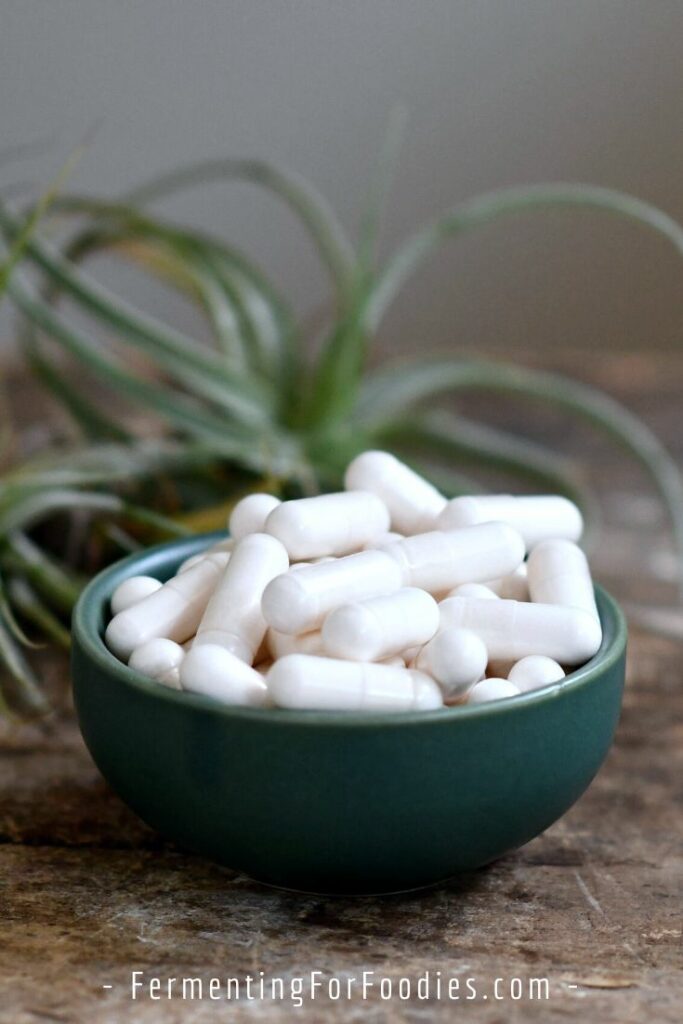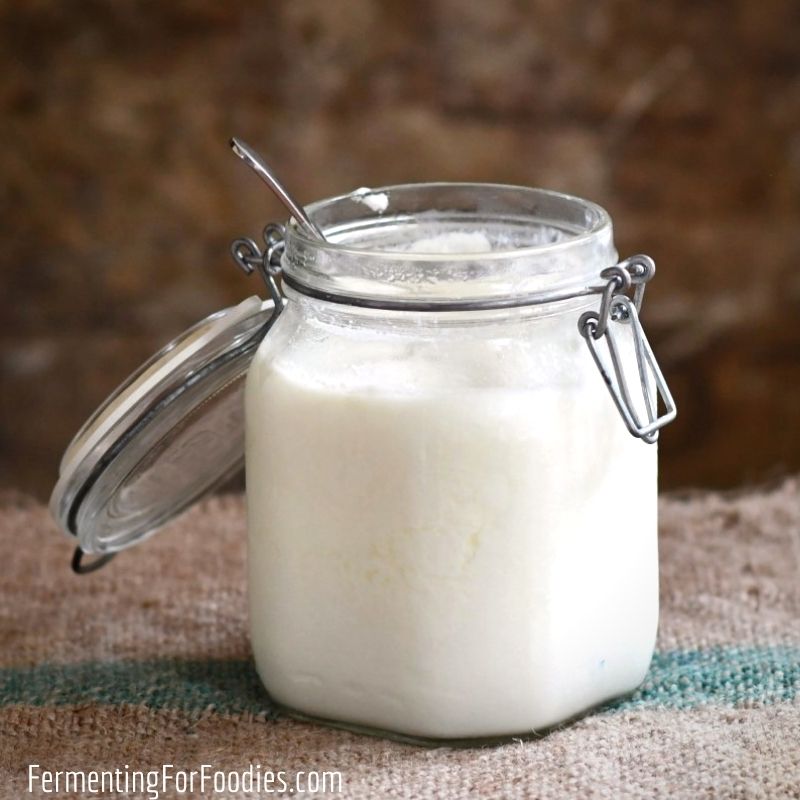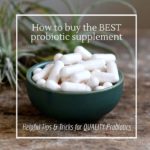Antibiotics and antibacterial cleaners play a major role in preventing serious illnesses. Unfortunately, they also kill beneficial strains of bacteria leaving our microbiome weak and vulnerable. Here is a brief guide on how to choose the best probiotic supplement for gut health and wellness. Avoid snake oil and get your money’s worth!

Probiotic supplements are found at most grocery stores, health food stores, and pharmacies. The only trick is that they are often quite expensive, and it’s hard to tell whether they are effective. Here are some things to consider when buying a probiotic supplement.
How to choose the best probiotic supplement
When buying a probiotic supplement, you can choose between tablets & capsules, refrigerated or not. Here are 3 simple rules for choosing high-quality probiotic supplements:
- Avoid probiotic products that are heavily processed. The point of processing foods is to make them shelf-stable. So skip the probiotic chewing gum and probiotic snacks.
- Tablets are less likely to have live bacteria, so choose gel caps or liquid supplements instead.
- Live bacterial supplements should be stored in the refrigerator or freezer. Like all probiotic products, if a supplement is shelf-stable then it’s probably not filled with live culture.
Test your probiotic supplement
The CFU (colony-forming units) listed on the label doesn’t mean that they are live microorganisms. It just means that they had that many bacteria when the product was tested in the factory.
The best way to make sure a probiotic supplement contains lots of live bacteria is to test it out. Most probiotic supplements contain bacterial strains that will culture in milk. Even a supplement that contains a lot of different strains of bacteria will contain some strains that will culture in milk.
Whether you use vegan milk or regular milk, follow the usual yogurt-making procedure using the probiotic supplement as the culture. Most tablets, capsules, and powders claim to contain billions of bacteria, so they should readily culture in 2 cups of milk within 24 hours. If after 24 hours you don’t have a really tangy yogurt then it is not a good supplement.
Snake Oil?
Despite all of this advice, I generally don’t recommend buying a probiotic supplement. I have tried to culture several very expensive brands of probiotics without any luck. One of them was a purchased liquid supplement through my naturopathic doctor, and despite containing several strains of yogurt-loving bacteria, it wouldn’t culture in milk.
I’m not alone in my dismal findings of the ineffectiveness of probiotic supplements. This British Study tested 8 different brands of probiotics with very little success. At this point, I think you would have better luck growing sea monkeys.

Grocery store probiotics: yogurt, kefir, kombucha, and more
Instead of buying an expensive probiotic pill, why not improve your gut health with delicious probiotic foods!? There are a number of probiotic foods that can be found in the grocery store.
Avoid:
- Any probiotic foods that are not in the freezer or refrigerator. Probiotics that are alive will not be shelf-stable.
- Kefir and kombucha are effervescent when they’re alive. If the container is sealed when you buy it, then it is no longer living. Even if it is bubbly… a sealed bottle of kombucha isn’t alive. There are too many risks involved with live kombucha (exploding bottles, alcohol production, a super sour product).
- In fact, I would say MOST generic grocery store kombucha isn’t alive. There are some exceptions, for example, there are kombucha brewers selling to hippy grocery stores in my city. Otherwise, beware, most grocery store kombucha is just soda pop dressed up as a health product.
Buy:
- Yogurt! All yogurts have some live culture, though they do vary greatly on how “alive” they are. In my Canadian neck of the woods, I like Astro’s BioBest and Greek Gods, which both have very active cultures.
- Try other cultured dairy products like buttermilk, sour cream, kefir. (Store-bought milk kefir is usually not real kefir, which is a mix of yeast and bacteria, however it’s still a probiotic culture).
- Refrigerated fresh products like miso, sauerkraut, and kimchi will also be probiotic. It depends on what is being made in your region, but you may be able to find all sorts of live probiotics. Usually, these are expensive, which is a good reason to try making a few DIY probiotics.
The best probiotic supplements
The unfortunate reality of probiotic supplements are that they rarely survive digestion. Stomach acid breaks down protein, and plays an important part in preventing bacteria and fungus from entering our body. This is great for preventing serious illness, but means that most probiotics don’t make it to our gut.
Here are three options that will provide a better way to improve your gut health:
- The calcium in dairy products allows the probiotic strains of bacteria to survive digestion. So grab a spoonful of yogurt instead of a pill.
- Prebiotic fiber and resistant starch are as important to promoting the good bacteria in your gut as taking a probiotic supplement. They are what feed the healthy strains of bacteria. In fact, your every day diet matters a whole lot more than the dietary supplements you take. A healthy diet for your microbiome focuses on prebiotics and whole foods.
- Making your own fermented foods is a great way to increase the wild, probiotic cultures in your indoor air. Why not give your whole body a probiotic boost!?



Leave a Reply